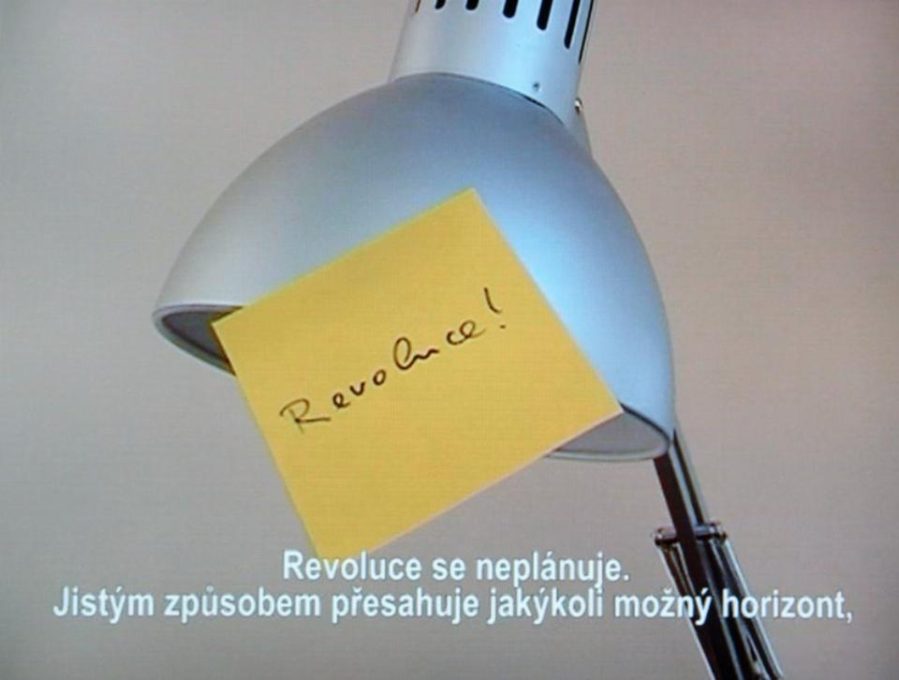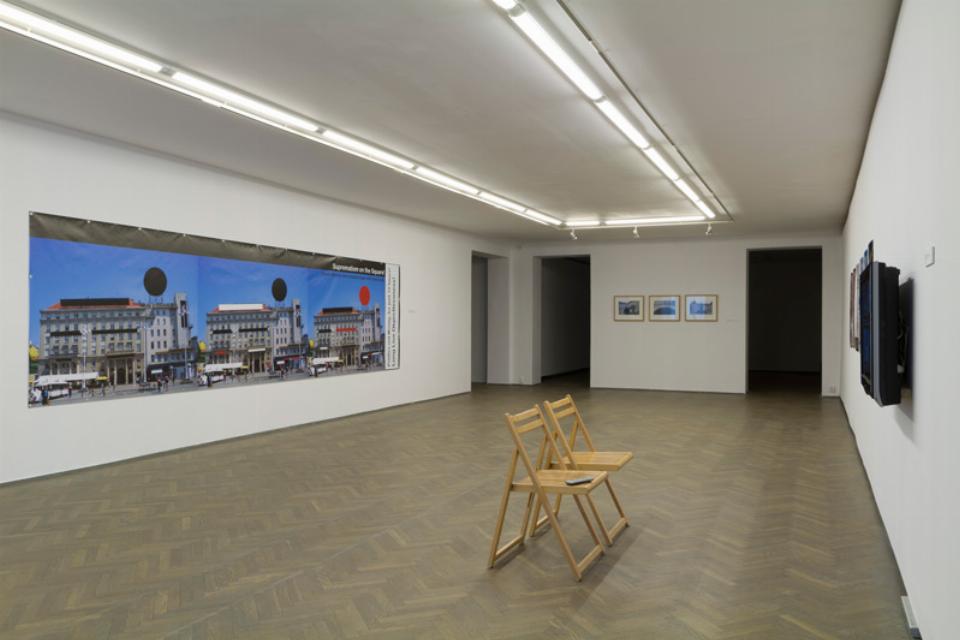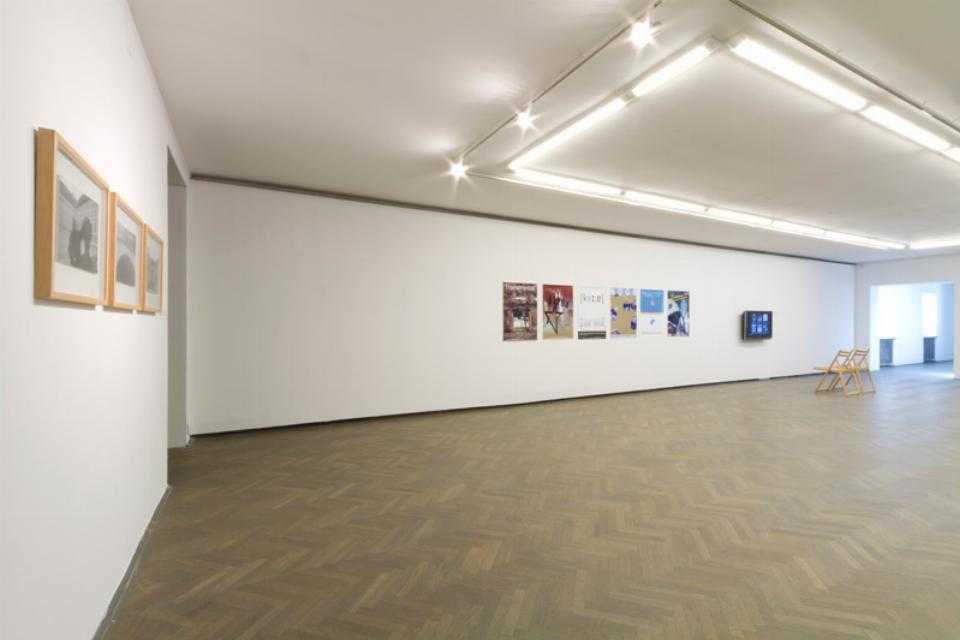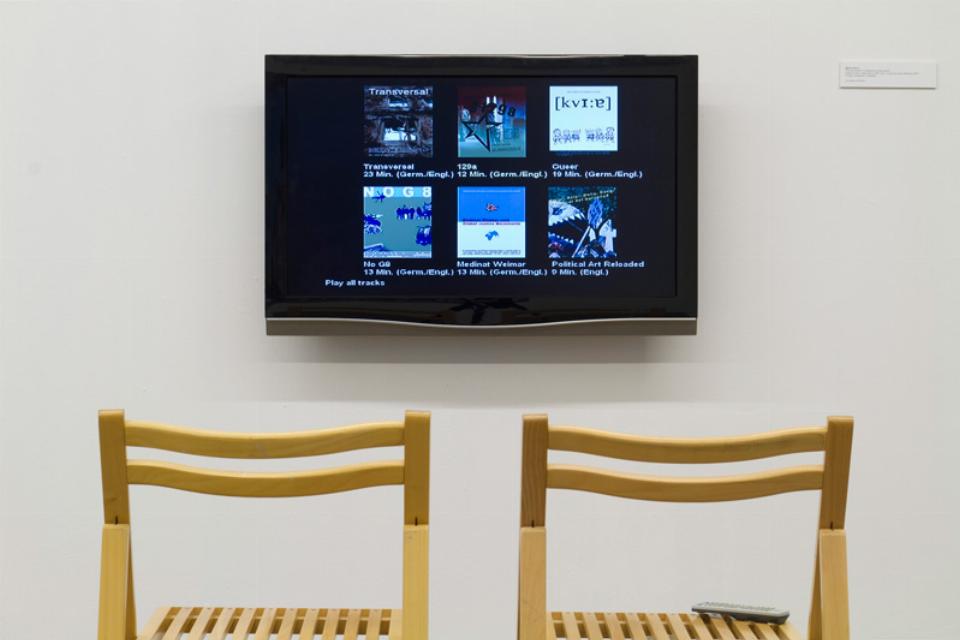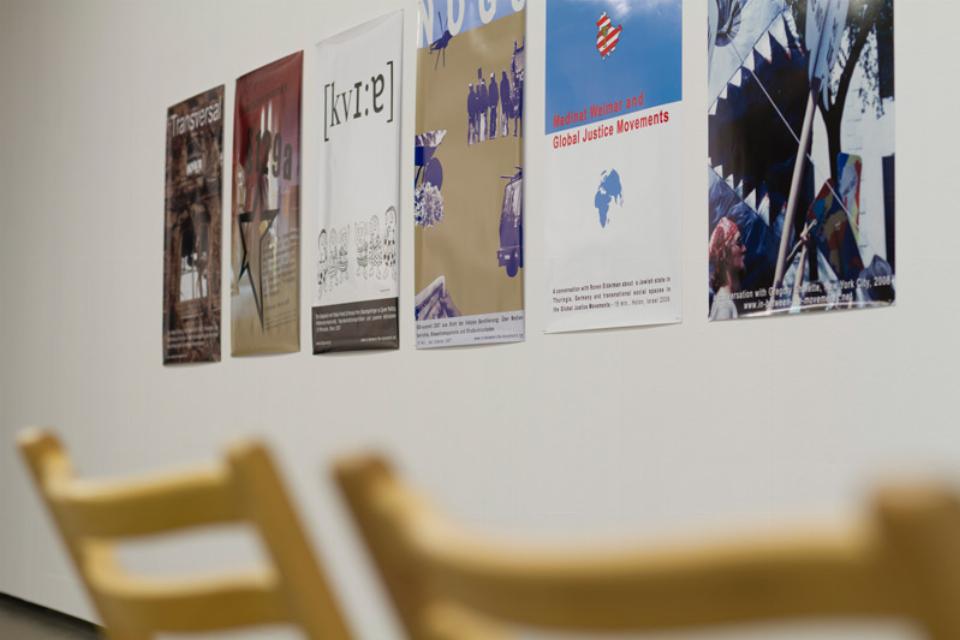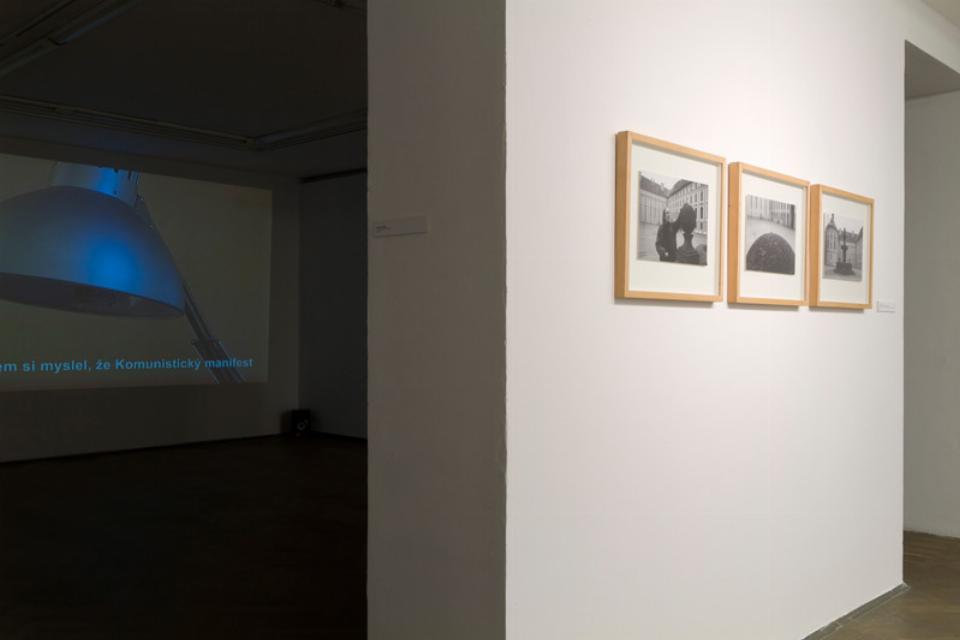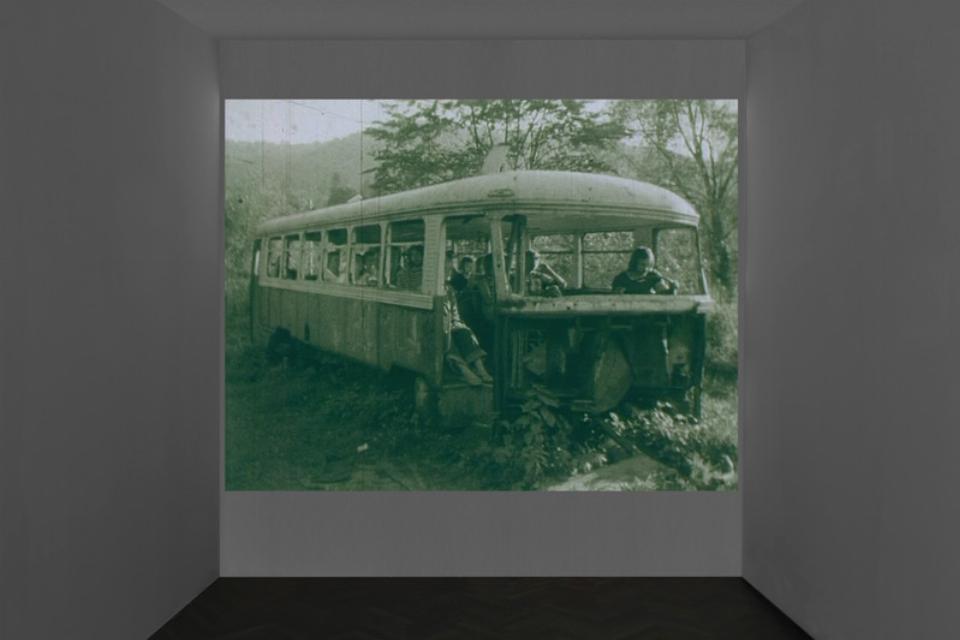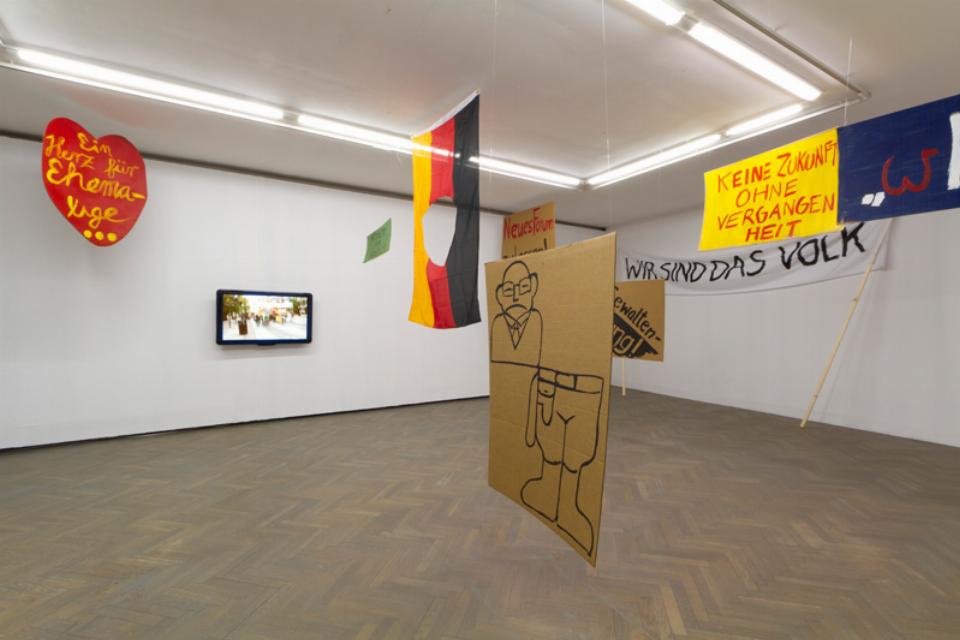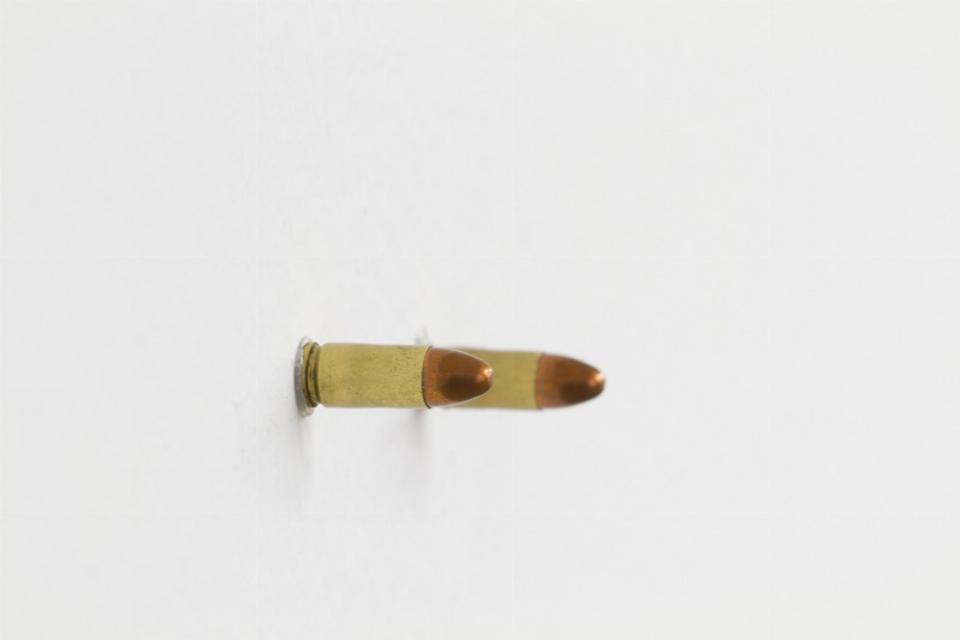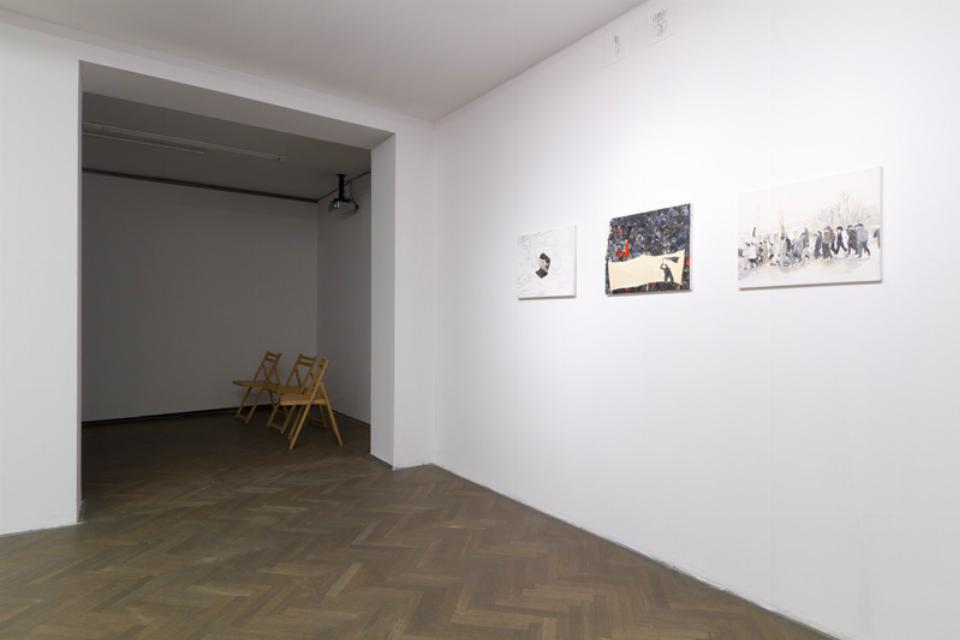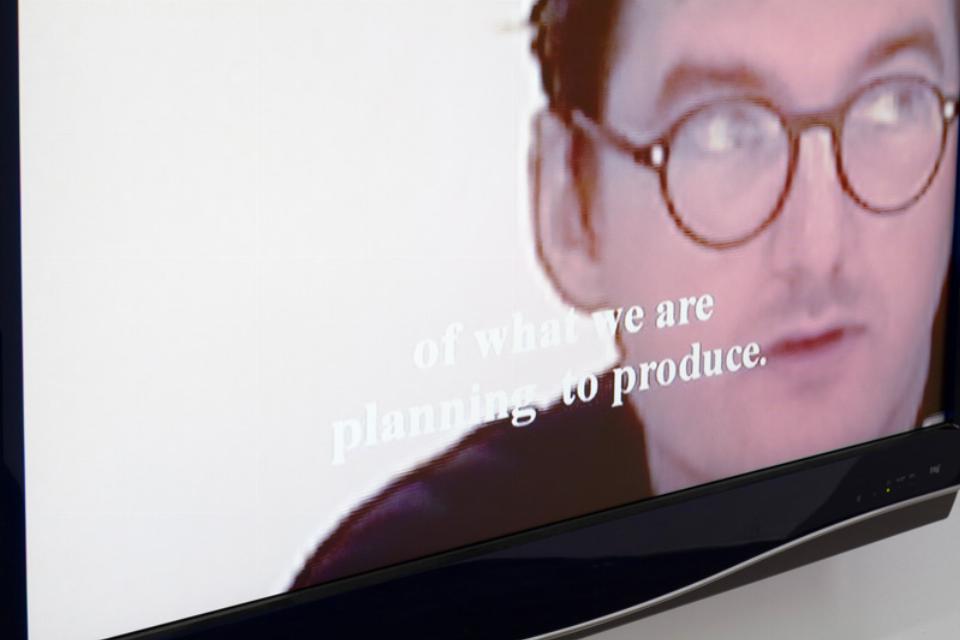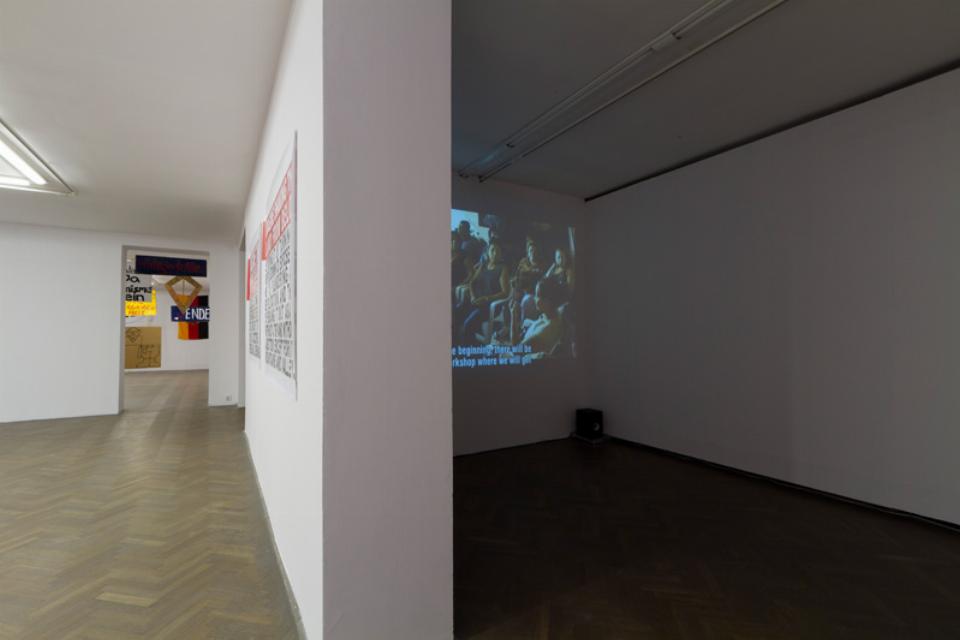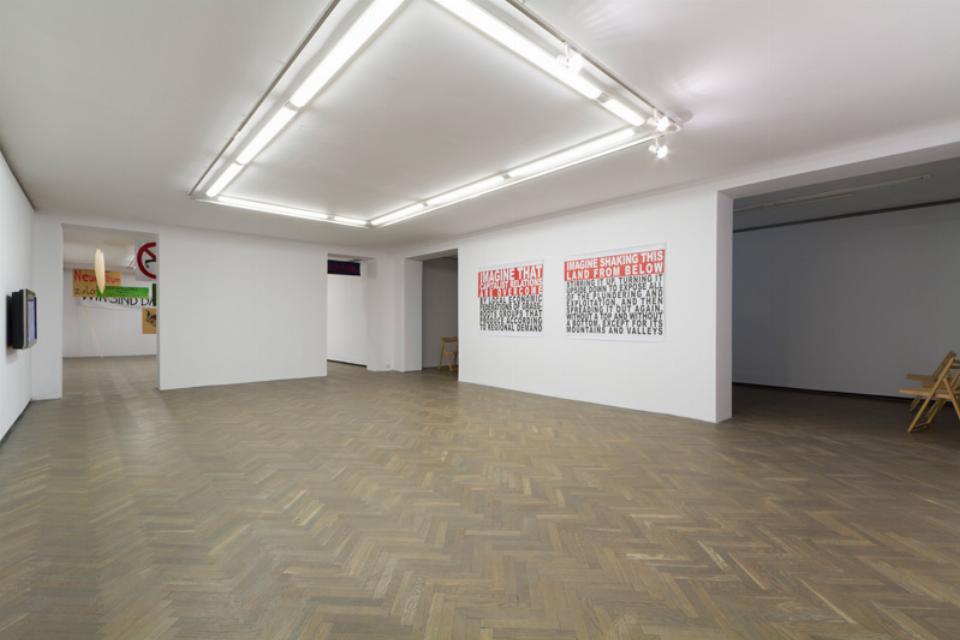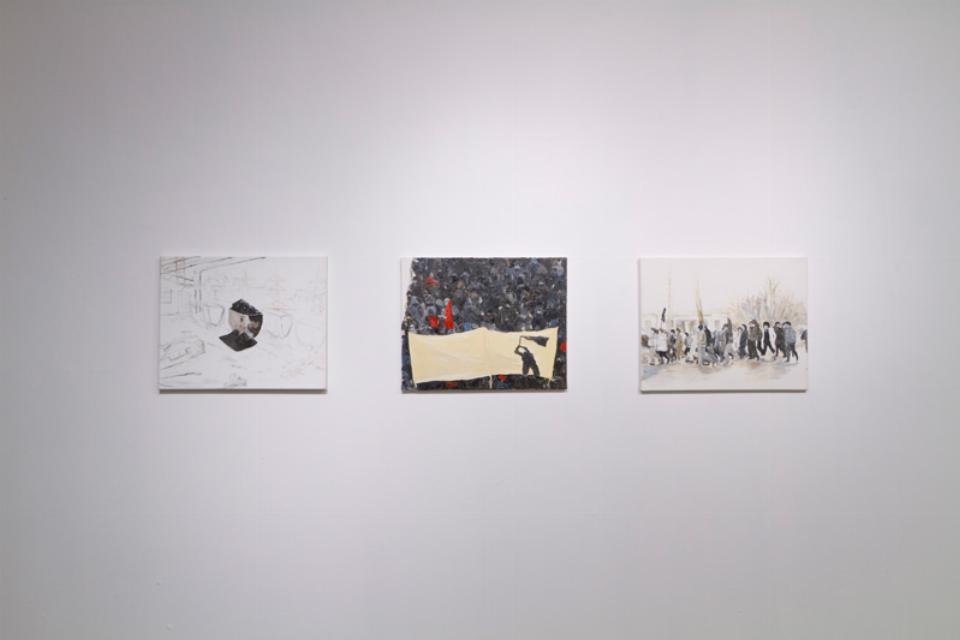Why do you resist? Forms of Resistance in Contemporary
Why do you resist? Forms of resistance in contemporary art
A new generation of artists have appeared in recent years that have come up against power structures in the broadest sense in their creative work and consider their work as a form of resistance against the apparatuses of power. But what does “power” mean for this generation? What motivates them? Some of these artists deal firmly with specific political constructs in their content and analyse control models or representations of power, whereas others focus on broader contexts resulting from them. In the artistic verbalisation of the criticism of the existing, in the highlighting of grievances or alternatives, language, content and concept are often connected and the limits between artistic staging and political action disappear. The art acts directly on life and its duty is to awaken its aesthetic awareness, public spirit and spirit of resistance.
With ”Why do you resist?” the Arsenal Gallery in Białystok deals with a survey of the forms of political resistance in contemporary art and presents the most varied types of approach on the topic in a variety of media. “Why do you resist?” is undertaken in cooperation with the curators Andrea Domesle(A/CH) and Michal Koleček(CZ) and on the basis of their touring exhibition, which was already shown in Graz (Forum Stadtpark), in Usti nad Labem (Emil Filla Gallery), in Thun (Kunstmuseum Thun) and in Pori (PoriArt Museum).
Akademia Ruchu (founded in Warsaw 1973 from Wojciech Krukowski; Janusz Bałdyga, Jolanta Krukowska, Cezary Marczak, Zbigniew Olkiewicz, Krzysztof Żwirblis)
Since their beginning the ‚Akademia Ruchu’ is understood as ‚theater of acting’. The group is working cross over – in the field of theatre, fine art, performance, film. Mouvement, space and sozial message are the main issues of all actions. The group is convinced that they could combine social and political means and artistic radicalism and this must not be presented separately.
Autobus II / Wetlina, 1976, video, looped, one part ca. 3 min., no sound
An open-space intervention. The wreck of an abandoned bus (situated in the case of the Wetlina show between the train station and a shoping area, and in Hel near a thoroughfare) was filled for the duration of one hour by 30-40 motionless ‘passengers’, and, like in “Bus I”, a ‘blind’ driver.
Making use of clips from films and documentaries or photographs, most of which were found from the Czech archives, Zbyněk Baladrán (*1973, lives and works in Prague) reflects on our perception of the past. This is mostly done against the background of the communist ideology, whereby its collapse, as also the collapse of modernist utopias, is thematised. Baladrán terms his work process as “non-intervening archaeology”. In Socio-fiction II (2005–2007) Baladrán combines several image documents and fragments from official Communist texts into an associative collage. The images seem to originate from the collective memory of the European society. The starting point is the term “revolution”, which brackets the artist’s considerations. A term that is linked with change or even destruction, but which is interpreted as a new beginning: a better world emerges from the ruins of the past.
Thomas Galler’s (*1970 in Baden) artistic work revolves around the themes violence, terrorism, weapons and war. The basis of his work Before the Collision (2008) is a detailed guide for kamikaze pilots of the Second World War, which he found on the Internet. “They are technical instructions,” clarifies Galler, “coupled with psychological support and philosophical reflections for the pilots to overcome the fear of death … and are identical in form and content to the instructions used by radical Muslim jihadi fighters when preparing for a suicide attack.” Galler summarises the original text in four vital phrases and presents them as a kind of poem.
The other work by Thomas Galler Before the Collision (2008) is also reduced to the basics. The distance between my pupils measures 62 mm (2008) constitutes an ironical self-portrait of the artist. The object, consisting of precisely two bullets mounted at the artist’s eye height shows only a specific physical feature of the artist – the distance between his pupils. Similar to to the work Before the Collision, The distance between my pupils measures 62 mm too has a brutal as well as a poetic effect due to the absolute reduction.
Marina Gržinić (*1958, lives and works in Ljubljana and Vienna) and Aina Šmid (*1957, lives in Ljubljana) work together since 1982. Their work Tester, evolved in association with the project of the same name, was launched in 2002 by the Fundación Rodríguez with the participation of Arteleku (an art centre in San Sebastian, Spain). Tester is to be understood as a network and a process, which deals with the production and distribution of artistic proposals, mainly in relation to the technical possibilities of the artistic work. Projects that have been pushed to the social and cultural peripheries by the capitalist system form the focus of Tester. The video work documents the meeting of several international artists from the Tester network and their discussions on the relations between art and politics, periphery and resistance.
Martin Krenn (* 1970 in Vienna) deals in his work with topics like capitalism, racism, national socialism or globalisation movements. For his multipart video work In Between the Movements, he has been collaborating with a wide variety of activists since 2007. He examines the practices of global movements in the fight for another world and also their theoretical approaches. Separately shot video interviews, which have been produced in close collaboration with the concerned activists, have been respectively assigned to associated posters. In between the movements regards itself as an instrument for the production of a collective alternative knowledge and as an insight into the various forms of resistance.
Kristina Leko
In its contemporary manner, this poetic art action invokes Suprematism, the avant-garde movement of the early 20th century, with its geometrical, objectless painting that concerned itself with endorsing the spiritual in art. Suprematism on the Square! was planned as an artistic site specific intervention on the main square of the city of Zagreb, Croatia. It should cover all the adverts and company logos with black cloth, or, alternatively red or white for 72 hours. The intervention was planned for the year 2010. The aim was to explore to which extent the business people are ready to give away their advertising for a non profit and poetic cause.
In December 2008, in the production of Local Base for Cultural Refreshment, a non profit organization, a test intervention on the east side of the square was supposed to take place. By covering the logos and adverts in black only, during the Christmas time, this intervention wanted to influence the passers by to reflect about the status of material values in todays society. The project was not realized. The leading bank in Croatia did not want to openly refuse taking part in the project. Instead, their director called the mayor.
After that, the permission, issued 2 weeks beforehand, was cancelled. Therefore, other companies which wanted to take part in the project were not able to do so. The cancellation of the permission by the municipal authorities is unique. It never happened before. All this influenced the form and dynamics of the project. Because of this incident, the project initiated its web site which promotes the project and informs about it. Also they collected signatures of support and comments about the project.
suprematizamnatrgu.kristinaleko.net
Jiří Kovanda’s (*1953 in Prague) activities in the second half of the 70s and beginning of the 80s constitute an important reference point in contemporary Czech art. They consisted mostly of small gestures and inconspicuous acts in public places, the majority of which remained without audience and are documented only in photographs and descriptions. Actions like the fixing of the gaze of persons on an escalator, or the deliberately accidental touches of passers-by on the street, can be understood as the silent appeal for the maintenance of elementary human contact and thereby as an act of resistance against the social isolation in a totalitarian state. Kovanda executed a new action specifically for the exhibition and recorded it as black & white photograph. In content it is based on the contradiction between the place of action (Prague Castle as residence of the President of the Czech Republic) and the minimalist intervention of the artist. Kovanda is seen on the photos as he shits on the well curb (puts a little pie on the cannonballs) in the courtyard. The president could have possibly observed him from his office window – but the artist carried out his action at a time when he believed he was alone. The action makes references to the impotence of the individual in the face of the official representatives of power.
Jérôme Leuba
Jérôme Leuba’s work is mapped onto conflict zones; it explores confrontational territories where diverse codes are at struggle. He has been developing, for several years, and through a variety of media and formats (photography, video and installation), an important corpus of works labelled «battlefield». These series seek not only to reveal the covert presence of power structures, but also to challenge the very codes of our strategies of representation. This Swiss artist’s images bear a tangle of small collisions. They resist the unveiling of a first glance by their ability to stress the ambiguous specificity of any mediatization of reality. His work does not relate directly to the news, but rather to the ways in which images are conceived and fabricated nowadays. In Leuba’s world everything has to do with images, and with the reactions they trigger, his work maintains the subtle gap between the visible and the invisible, between what is and what isn’t.
In battlefield # 9 / washington sniper on a theatre stage, two dancers interpret the instructions published by the Washington police department in the «Washington Post,» in 2002. These orders were intended to draw the citizens’ attention on some places to be avoided and on the postures to be taken in order to escape the mad sniper’s bullets that had already killed a dozen people at random. In a semi-dark environment, the two dancers crawl on the floor, move quickly, or try to hide in shadowy places. This absurd choreography points to the constraints that these instructions exert on the body.
POLICE ISSUES CITIZENS «ADVICE» ON SNIPER ATTACKS THROUGH THE WASHINGTON
POST. OCTOBRE 2002
1) WHILE OUTSIDE, TRY TO KEEP MOVING. A MOVING TARGET IS MORE DIFFICULT TO HIT
THAN ONE THAT IS STANDING STILL.
2) IF YOU MUST REMAIN IN ONE PLACE IN AN AREA WHERE YOU FEEL VULNERABLE,
SELECT THE DARKEST PART OF THE AREA TO SIT OR STAND IN.
3) WHEN MOVING OUTSIDE, WALK BRISKLY IN A ZIGZAG PATTERN.
4) IF YOU MUST STAND OUTSIDE, TRY TO KEEP SOME TYPE OF PROTECTIVE COVER
BETWEEN YOURSELF AND ANY OPEN AREAS WHERE A SNIPER MIGHT BE LOCATED. FOR
EXAMPLE, IF YOU ARE FUELING YOUR CAR, STAND BETWEEN YOUR VEHICLE AND THE
GAS PUMP AND BEND YOUR KNEES TO LOWER YOUR PROFILE.
5) IF YOU ARE FIRED ON IN AN OPEN AREA, DROP TO THE GROUND AND ROLL AWAY
FROM WHERE YOU WERE STANDING. LOOK FOR THE CLOSEST PROTECTIVE COVER AND
RUN TOWARD IT IN SHORT, ZIGZAG DASHES.
6) BE CONSTANTLY AWARE OF YOUR SURROUNDINGS WHILE OUTSIDE. NOTE ANY
In the work The Testament of Siberia, Gintaras Makarevicius (*1965 in Trakai, Lithuania) provokes a conflict or contradiction between word and image. The basis of his video work is the recordings of a family celebration in the Soviet Union shot on Super 8 in the 1960s. Over the images, the artist has put the voice-over of a man who speaks of his family’s deportation to Siberia when he was a child. Two realities, which might have perhaps happened at the same place and perhaps in close succession, but which nevertheless appear to have absolutely nothing in common, are combined with each other and in this way focus on the fragile relationship between memory, experience and knowledge.
The catalyst for the multi-part series Appointment with History was an anti-capitalist demonstration in Basel, which the artists duo Mona Vatamanu & Florin Tudor (*1968 Constanta, Romania/ *1974 Geneva, Switzerland, lives and works in Bucharest) attended, and which strongly reminded them of socialist Romania by their symbolic and visual expression. The small-format paintings of the series created afterwards in 2007 are the product of a pictorial research, a search for new symbols for old utopias. The two artists searched through newspapers, archives, school books and propaganda materials and found completely identical images time and again. “Tryst with history,” the duo themselves clarifies, “is a study concerned with symbols … We use images that link various ideologies and epochs of history and then examine their significance in very specific situations.”
REINIGUNGSGESELLSCHAFT
The Readymade Demonstration, 2009
video and relicts from re-staging the East German peaceful revolution
REINIGUNGSGESELLSCHAFT (RG) organized a performative event in the city center of Columbus Ohio. The participants reenacted one of the East German peaceful demonstrations from fall of 1989. The idea is to stage a readymade demonstration and to look at the demonstration as a cultural technique. The Demonstration uses the original slogans from 1989. The work is not about history, but about how we perceive our personal role in society. In preparation of the demonstration RG held a Banner Workshop. After an open discussion the participants were invited to take part in the making of the banners.
The historic context
This peaceful movement led to the fall of the iron curtain and changed the geopolitical landscape of the world. The main slogan of this movement “Wir sind das Volk” – “We Are the People” stands for the will to gain back power to the people. In 1989 after forty years of existence the East German state – GDR broke down. What once started as a vision of a class free society failed in it´s real existence. Nevertheless it was the intention of the most demonstrators to create a just society on the basis of true Socialism. It became clear very soon, that this intention was just an illusion. Right after the fall of the Berlin Wall started a process of adopting the values of the Western capitalist consumerist society.
The contemporary context
Re staging the demonstration transforms it to the specific context of the USA. The concept of RG is an artistic “readymade” in form of a political demonstration. This shift of context can be described as a creative anachronism. Re-staging is a mode of understanding. It opens spaces for reflexive consideration of the current situation.
Curator: Andrea Domesle, Michal Koleček
Akademia Ruchu

PLAN YOUR VISIT
Opening times:
Thuesday – Sunday
10:00-18:00
Last admission
to exhibition is at:
17.30
